Pearl Swimbaits? What Up?
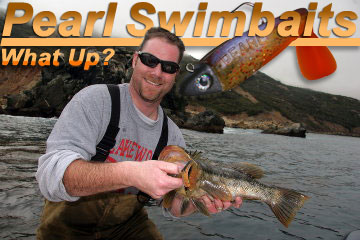 For the better part of the last two years, the word “pearl” has been finding its way into the conversational lime-light of several So-Cal. angling tribes… what up? We thought we would take a closer look at Pearl to see what’s behind all the hoopla.
For the better part of the last two years, the word “pearl” has been finding its way into the conversational lime-light of several So-Cal. angling tribes… what up? We thought we would take a closer look at Pearl to see what’s behind all the hoopla.
HISTORY
Spend a little time with father and son team Bill and Mike Stembridge and you will quickly learn that both of these guys got hooked on the glass pipe of fishing way early on, albeit at different times and in different bodies of water, but equal in the passion and enthusiasm departments. Bill (Dad) was born and raised in Redondo Beach, where his father and grandfather introduced him to fishing. By the age of six, he was marching down the hill armed with the Ocean City solid glass white rod and matching conventional reel spooled with 25lb rope he had received for Christmas. At the pier he would catch the $3.00 AM ride on the Voyager out to the Sacramento and/or California barge.
Bonita to 10 lb. were the big deal back then, with lots of 12 lb. barracuda thrown in the mix. Occasionally, a big school of monster yellowtail would roll in and wipe everybody on the barge out. Anchovies were the staple method, with tuna feathers being the favorite artificial option of choice. As fishing life rolled on, the Ocean City rig was replaced with a Stembridge customized trout rod – extended handle – for fishing light-line. Barge-days turned to half-day trips, which turned to full-day trips. Sometimes, he would go with Gramps or Pops and sometimes, on his own.
Somewhere around 13 life took a turn, and the Stembridge family moved to Los Alamitos. Fishing was still within a bike rides reach for Bill, but gradually the rod and reel would be replaced by another passion – the surfboard- completely understandable considering the schools of yellow haired, bikini clad groupies who came along with that program back then, heck, and still do.
In his usual form, Bill dove into surfing head first, and before long not only was he surfing his own custom boards, but he was shaping custom boards for the likes of Dewey Weber and Hap Jacobs – definite legends! Come to find out, both Dewey and Hap were avid fisherman, so before long Bill was back on the fishing program going long range for tuna and marlin, all the while shaping boards and catching waves in between.
Somewhere along the way, the stork paid the Stembridge house a visit, and son Mike showed up. Bill went to work running the tackle shop down at the Queensway Sportfishing landing, and family life in Los Alamitos casually rolled onward.
It was his work at the landing that first got Bill’s desire to produce a high quality bait fired up. Several ideas would come and go, but nothing really stuck, but he kept thinking. All the while son Mike was growing up fast. A star 1st baseman in high school, Mike, like dad, had caught the fishing bug early-on and would spend what little free time he had between school and baseball practice exploring the small local lakes in the area for fat large mouth bass, of which he has managed to catch 3 over the 10 lbs. – all on 3 lb. test line! And guess what… he caught them with a customized trout rod. Mike tells a great story about the first 10 pounder; he brought it home in a bucket to prove to everyone that he had caught it, only to race back to the lake with dad to release it, very much alive he adds.
Through college – on a baseball scholarship – Mike continued to work the lakes and eventually lured Bill out into the freshwater. It only took one cast and a single strike on a Chug-bug top water lure to firmly hook Bill on the freshwater scene.
So now both Stembridges were sneaking around at night through the toolies of the numerous forbidden ponds and lakes around Los Alamitos, stalking big fat green bass until the early morning hours when they both had to get ready for work. Eventually, Bill would pay Mike back the favor and buy him a float tube to check out Los Alamitos Bay with. And, much like his Dad, it only took one strike of a rather large Spottie – which worked him over good – to convince him of the freshwater-saltwater crossover.
Bill and Mike took up the idea of pouring their own baits if for no other reason than to save a little coin, but also to build a better mouse trap. By their standards the plastic baits available just didn’t really do much.
FORM MEETS FUNCTION
With a garage set up to build and shape surfboards, Bill started shaping the first bait. No one is really sure exactly how long it took Bill to finish shaping that first one, but his loving wife will tell you about the sleepless nights she lied awake while Bill sat at the edge of the bed and sanded away on it. Bill took everything he had ever learned from the hydrodynamics of surfboard design: entry points, the point at which water comes in contact with the element; exit points, how the water leaves contact with the element; and break points, areas of the element that move or shift based on water flow – and began putting them all to work on shaping his new bait design.
Hands of Steel: Bills hands are as splintered as the hardwood he uses to hand shape his baits. These two hands have tediously shaped every bait in the Pearl arsenal!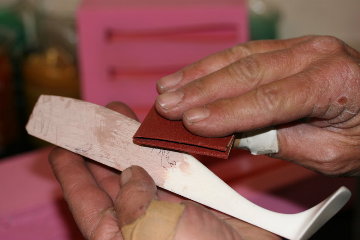
SCIENCE
Armed with a degree in physical science and a job as a high school science teacher, Mike put his knowledge to work on the material make-up and material density, while Bill continued to work on the shape. Through endless iterations of trial and error, not mention gallons of plastic material and sheets of 1000 grit sandpaper, their dual efforts were starting to come together. Mike was working with the liquid plastic base material and trying variance combinations of softener and hardener, along with different brands of base material, which we were surprised to find out there are several types and makes of, all of which vary in quality, and due to it being a petroleum based product, scent becomes a real issue. Once shape and material were roughed in, both Bill and Mike went to work on action. There were three main action effects that they were looking to create with the bait: a “wobble” form side to side; a “swimming” action throughout the entire body of the bait and the “thump” of the beating tail. With those actions in mind, father and son went back to their prospective laboratories – bedrooms at night… remember, both of these cowboys worked day jobs.
COLOR MATTERS
With the “signature” 3-way action of the bait quickly approaching reality, it was time to take a good hard look at color. Mike, being the natural teacher he is, provided us with a light absorption in seawater 101 course that shed a lot of light on the subject.
“Visible light penetrates into the ocean, but once past the sea surface, light is rapidly weakened by scattering and absorption. The more particles that are in the water, the more the light is scattered. This means that light travels farther in clear water. Absorption can be caused by phytoplankton, which use the light for photosynthesis, particulate matter in the water, dissolved material in the water, or the water molecule itself. The light energy of some colors is absorbed nearer to the sea surface than the light energy of other colors. The dimming light becomes bluer with depth because the red, yellow, and orange wavelengths have already been absorbed. We typically see the ocean as having a blue-green color because these are the wavelengths that penetrate the deepest and are scattered back to our eye.”
In addition to light absorption, one must consider light refraction – or the bending of light caused by water. While conducting several projects with his students, it became obvious that not only does color refract, but also the refraction can actually cause subtle changes in the visible color of light. Combine that with the varying types of light a bait is subjected to out on the water – overcast or bluebird skies; dirty water or clean water etc. and you got a whole lotta’ variables going into color selection.
Color absorption rate:
60% of all light is absorbed at a 1-meter depth. By individual color, Red is fully absorbed at 1 meter; Yellow is fully absorbed at 10 meters; Green is fully absorbed at 50 meters and Blue is fully absorbed at 150 meters.
Color absorption example:
A red crab is about 30 meters down in the water. What is the crab color – brown/red/black/orange? The crab, which is normally brown-red, will appear nearly black. This is because water absorbs red light. Since little red light gets to the bottom of the ocean at that depth, there is little red light to reflect from the crab. When this little bit of red light is reflected, after a relatively short distance, the water absorbs all of the red. This is why a swimming pool appears a bluish-green; the red has been absorbed, leaving a cyan cast.
KNOWLEDGE, EXPERIENCE & CRAFTSMANSHIP
Now consider this the next time you are picking out a couple of colors down at your favorite tackle store / watering hole – take all that you know about hydrodynamic shape, the weight-mass issues of material, the effects of liquid plastic softener and hardeners, color absorption and color refraction, liquid plastic color pigments and glitter material composition, creating the right color effect without impacting the action effect, and also remember that the material for these baits is heated and poured from the top down and will sink into position…Now, how do you create a chartreuse tailed, orange bellied, clear red flake bodied, dark brown stripped back with gold flake glitter bait? My best guess is that this is the point where experience, knowledge and craftsmanship really come together. To this writer, it is truly an art form, and I will never complain about the price of plastics again!
ANGLER FEEDBACK
About two years ago, father and son emerged from their prospective laboratories and reached out to a few local anglers, arming them with some base sizes and color schemes. They asked for feedback. Needless to say, the feedback came back fast and was very positive. With the body shape marrying well to the commonly used triangle lead head, Pearl baits lended themselves well to upsizing and downsizing in head size without adverse effects.
This gave the baits a broader use within their respective size ranges. For most anglers we spoke with, it was the 3-way action that really made an impression. The action was truly like no other; you could see the swimming action or ‘twist’ as the bait snaked through the water; the side-to-side “wobble” had an almost ‘iron like’ kick, which also reflected light on the brighter colored baits, and the “’thump” of the tail, which was something you could actually feel, much like the feel of a spinner bait or the wobble of a crank bait. The basic color configurations seemed to blend in with the surroundings, creating a very natural look.
The endless, sleepless nights and mountainous piles of swimbait experiments gone wrong was finally paying off. As of this writing, the Stembridge duo have 7 sizes of the shad style swimbaits; 3 sizes of a wall creature bait and 2 styles of soft iron (Dragon’s or (Draggin) tongue), all that proudly wear the name PEARL. The numbered baits were not designated for the length, but more as a simple number to id them. The T2 bait comes alive on a 3/8 oz. head; the slightly bigger 3 will carry a 3/8 or 1/2; the newer 3.5, a unique bait, will carry a 3/4-ounce lead head well and casts like a bullet. This compact bait sinks like a rock, lending itself well to not only reaching far off targets in the shallows, but skittish fish often holding in deeper water. It’s also a light liner’s dream. The 4, perhaps the most versatile bait, is capable of handling a 1/2 to 1 1/2 ounce lead head. With a 3/4 ounce, this bait has to be seen to be believed! The 5 and 6 are the big guns in the line-up. Both pack a punch when rigged with 3/4 to 2 ounce heads on heavy wire hooks… hang on!
Performance Tackle in Los Alamitos, known for their progressive approach in fishing, carries a large selection of Pearl Swimbaits. The creatures have been crawling their way on to breakwaters and bedding bass all over So Cal. And as far as the soft irons, though not yet available at retailers, there seems to be a bit of a stir coming from the Pearl camp but no one’s talking yet… stay tuned.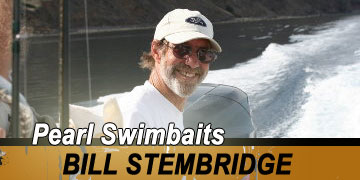

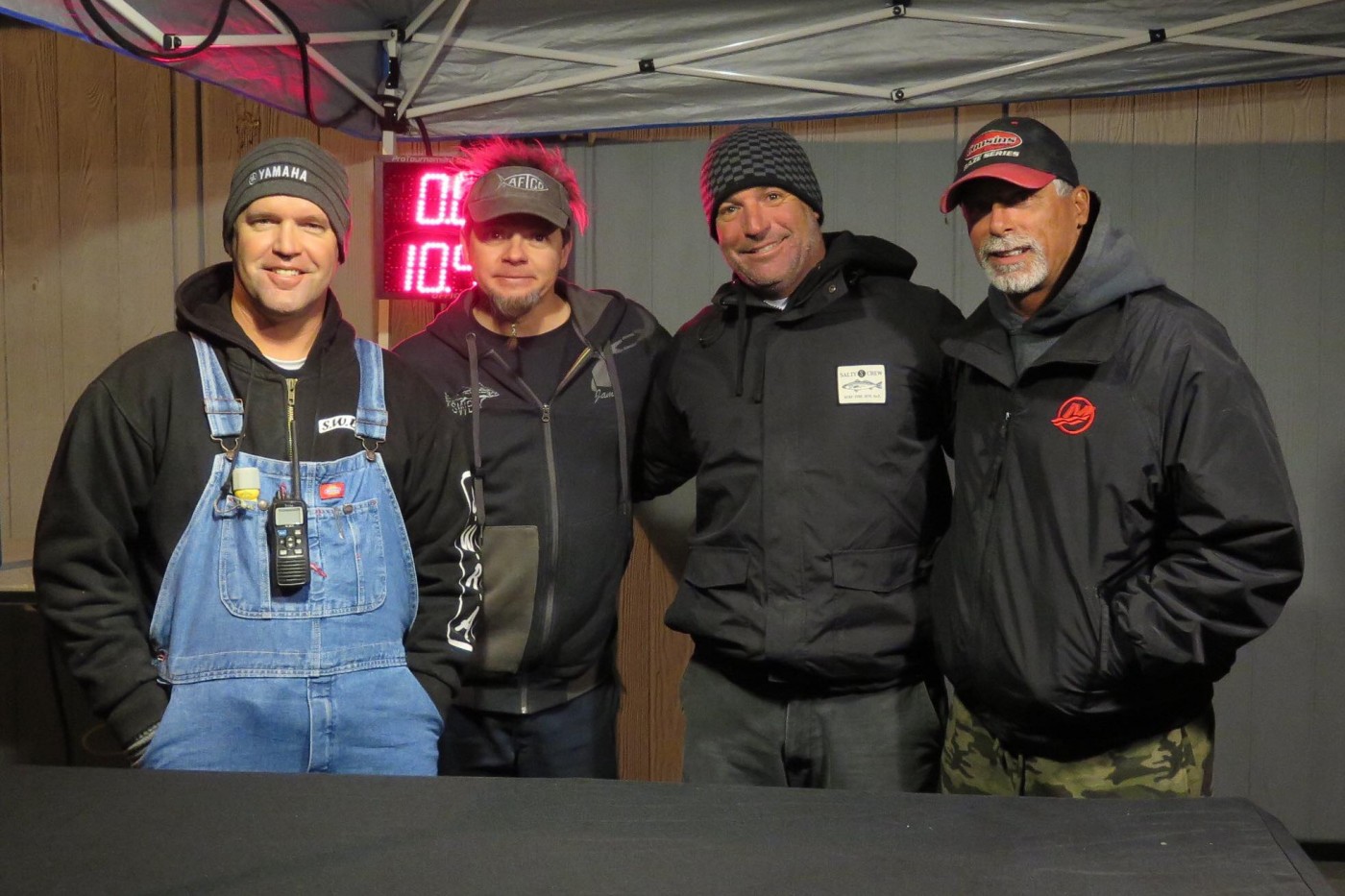

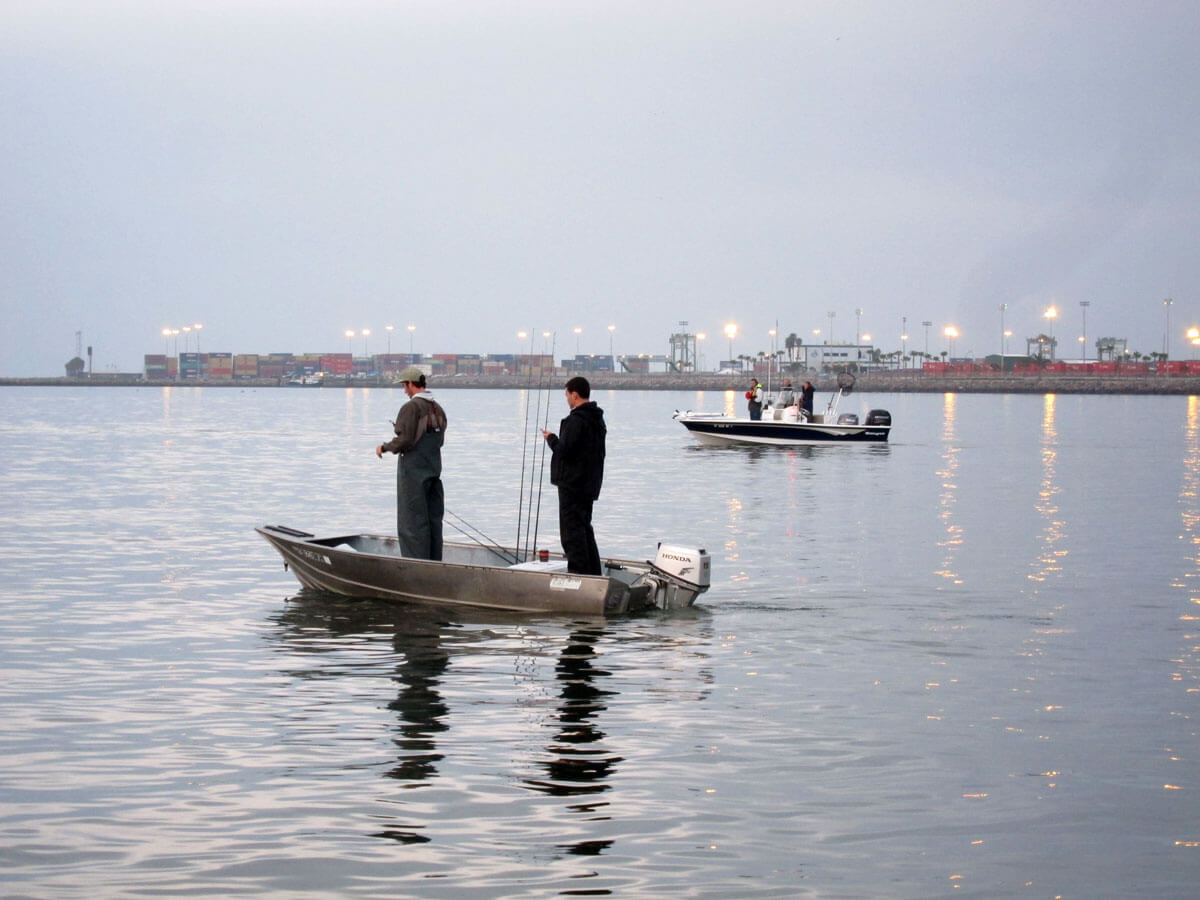
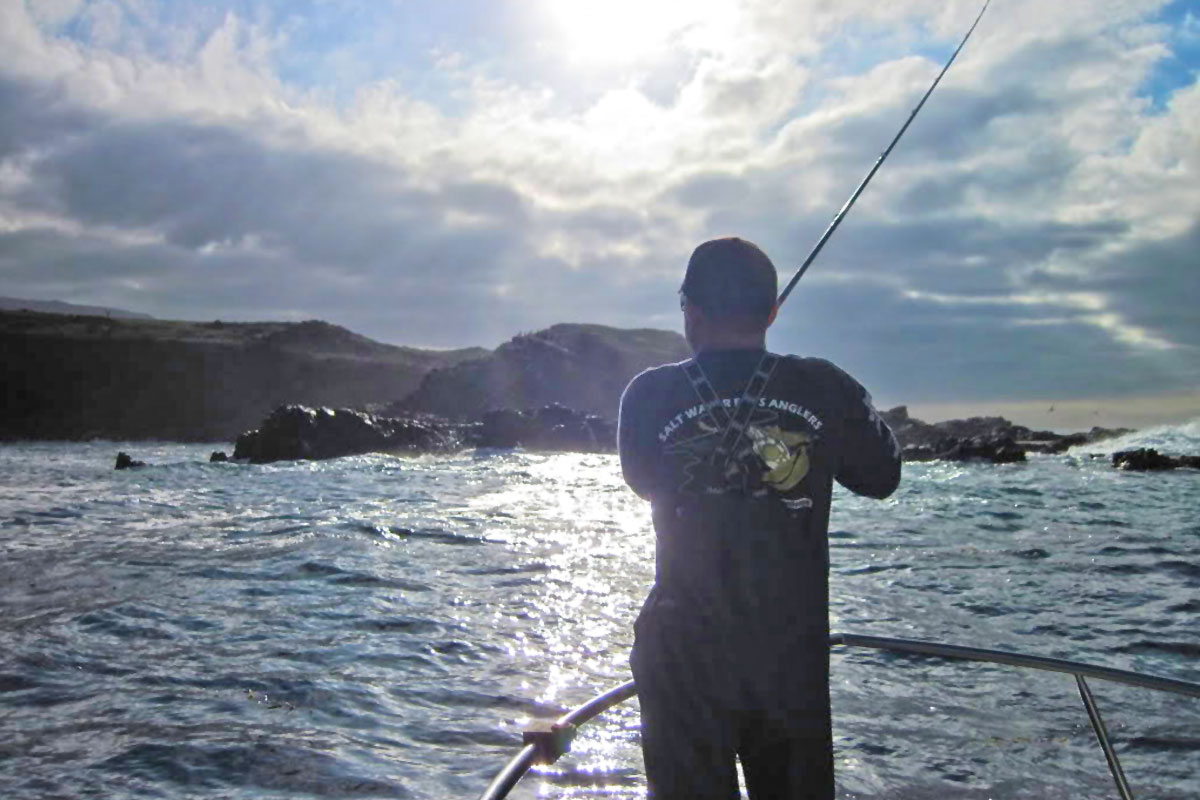
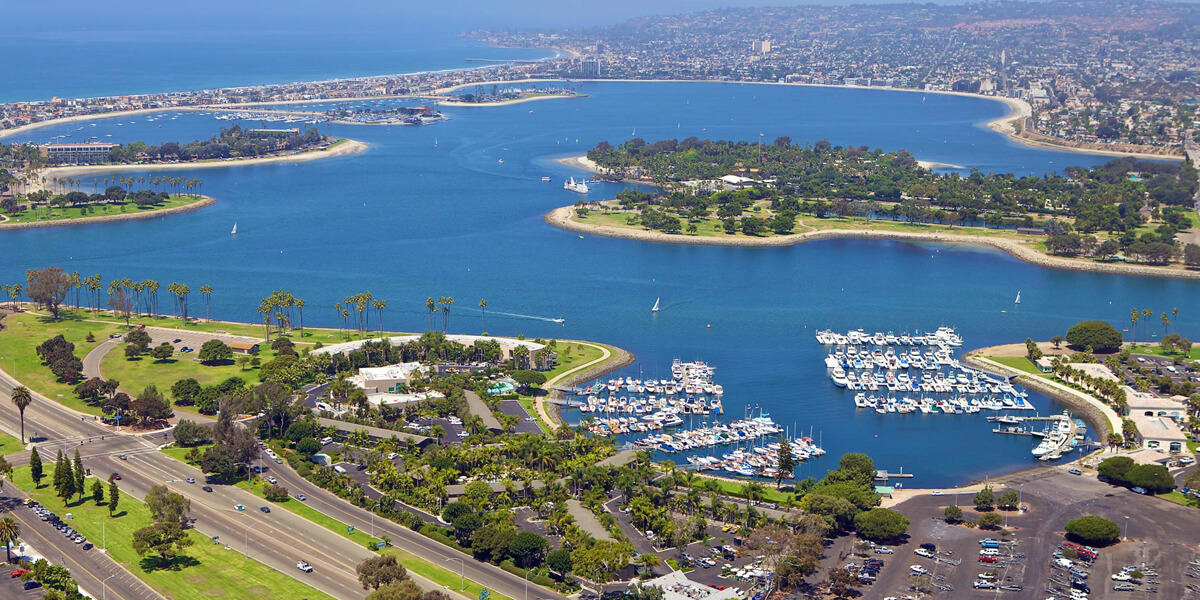
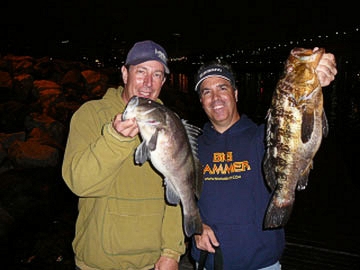

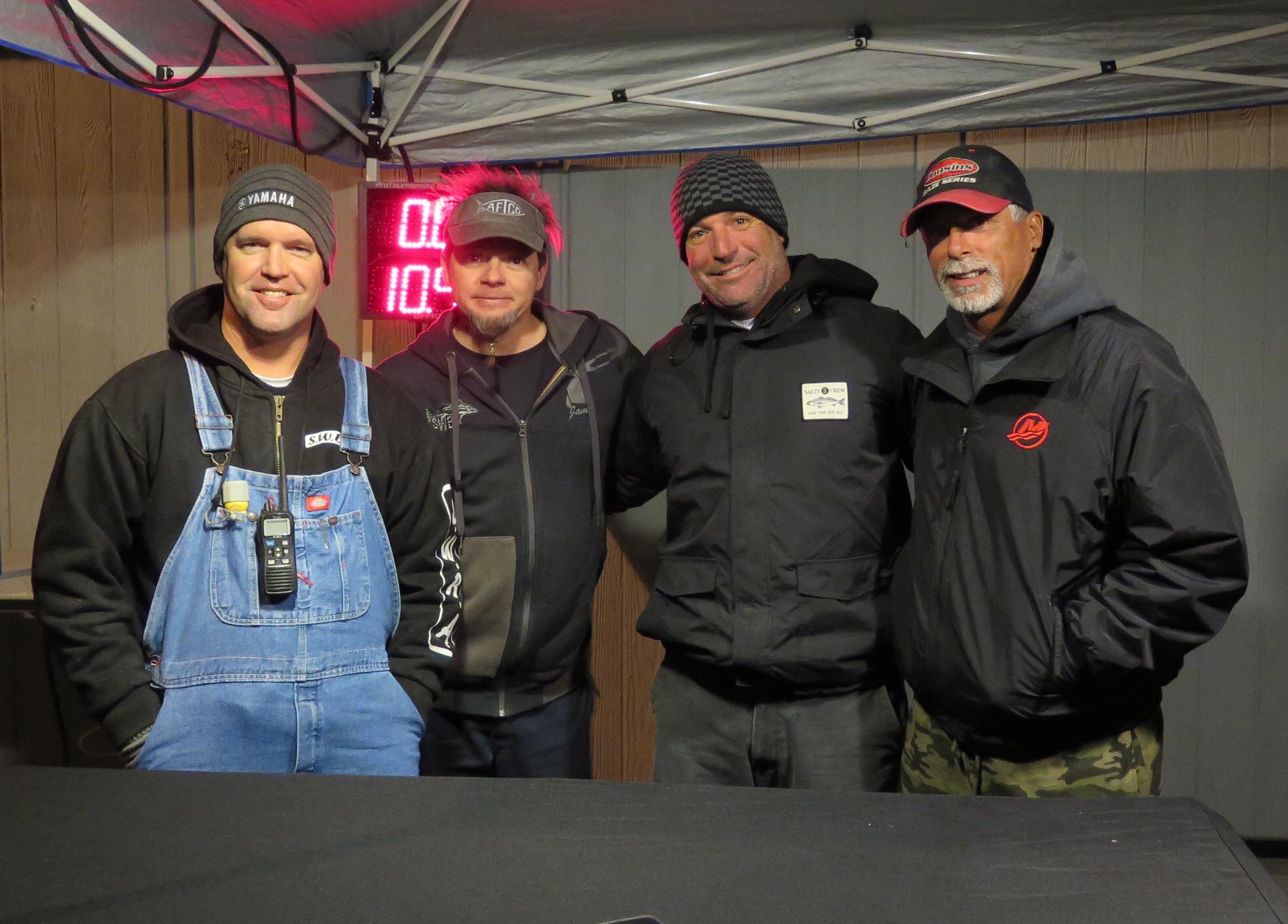
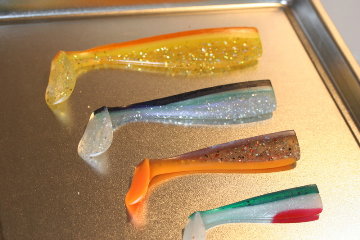






Got something to say?